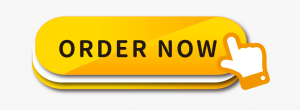Unique photos are the gold standard when it comes to visual content, just as original articles are better for SEO than text stolen from another site. Create your own photographs to accompany your blog or corporate website wherever possible.
Including photos of your own stuff on your website may give it a more open, genuine image, which can help you establish a positive reputation with your visitors. If you don’t have the ability to make your own photographs. Remember, it’s your original material that will get you discovered on the internet.
Google can’t tell what your pictures are about merely by looking at them. Rather, it obtains this information from the tags associated with each image. As a result, rather than leaving these tags blank, you should always set them. The alt text tag, in particular, should be a keyword-rich description of the picture.
Using file names that represent what each image truly displays not only makes it simpler to manage the files but may also help with SEO. For two reasons, you should utilize keywords in your file names.
For starters, it tells Google what your image is about. Second, picture URLs contain these file names. Overly huge image files take a long time to load, which may cause people to abandon your site. This action will raise your bounce rate, which Google will interpret as a signal that your site should be pushed down the search engine results pages. Reduce the resolution of your picture files till they’re just big enough to fit on a big desktop monitor.



